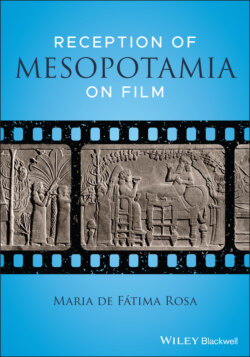Читать книгу Reception of Mesopotamia on Film - Maria de Fatima Rosa - Страница 18
2 Mesopotamia in Literature and on Stage 2.1 The Resurrection of Classical Legendary Figures
ОглавлениеDuring the Middle Ages and Renaissance, the Mesopotamian characters conceived by the classical authors did not disappear from Western imagination. Many were the authors who focused on them and incorporated them as prominent figures in their narratives. Semiramis, Ninus, Nimrod, and Sardanapalus were gradually reborn. They received new features and deepened some behavioral traits that had been granted to them in the Classical era. Aspects such as incest, lust, and gender confusion1 were explored by authors like Dante,2 Boccaccio,3 or Petrarch.4 In most cases, the legendary figures associated with ancient Assyria and ancient Babylon were presented in a very pejorative way, exacerbating the traits forged in antiquity: Nimrod was the giant; Ninus the despot capable of killing husbands to rape their wives;5 and Sardanapalus the “transvestite.”6 Hence, when we reach the fourteenth and fifteenth centuries we continue to recognize the aspects of an orientalism that, through cultural distance, places in this other the genesis of the most odd vices, the most amazing sins, and varied evils.
During the Renaissance and later, in the sixteenth and seventeenth centuries, European society was increasingly committed to understanding the role of women.7 It was in this context that De mulieribus claris (1374) from Boccaccio emerged. In that work, the author tells the story of several women who, despite being considered weaker in body and spirit than men, had managed to gather the necessary strength to carry out considerable achievements. Among these, the author places Semiramis. The queen of Assyria, responsible for the construction of Babylon, appears right after biblical Eve, confirming her importance as a stereotype of female wit. However, in presenting her as the antithesis of Eve, Boccaccio throws her achievements, her government, and her multiple constructions into the background, preferring to focus on her sexual conduct. According to him, it was Semiramis who invented the chastity belt for the use of palace women in response to the jealousy she felt for his son, who was “among her lovers – and this is something most beastly than human.”8
One of the several impressions of the work, widely disseminated in Europe, presents an illustration that elucidates us about the three great aspects for which this woman became known: 1) sexuality; 2) troubled maternal relationship and incest; and 3) royal and military power (Figure 2.1). These three characteristics would accompany the persona of Semiramis and would be transplanted to literature and opera during the eighteenth and nineteenth centuries, at a time when, through the Baroque, the legendary queen became a true tragic heroine. At least two of these traits reached the cinema, often mixed. Incest was set aside.
Figure 2.1 Woodcut illustration of Semiramis from an incunable German translation by Heinrich Steinhöwel of Giovanni Boccaccio’s De mulieribus Claris (1474 edition).Source: Rare Book Cataloging at Penn: https://commons.wikimedia.org/wiki/File:Woodcut_illustration_of_Semiramis_and_her_son_Ninias_-_Penn_Provenance_Project.jpg. Licensed under CC BY-SA 2.0.
With the Enlightenment, it became almost a habit to resort to the past to access the present.9 Semiramis and Sardanapalus maintained a constant presence in the tragedies performed on the stages of the great European capitals. The light of the East10 had not been extinguished, remaining forever indebted to the myths created by the Classics about their neighbors and predecessors of the Near East.
